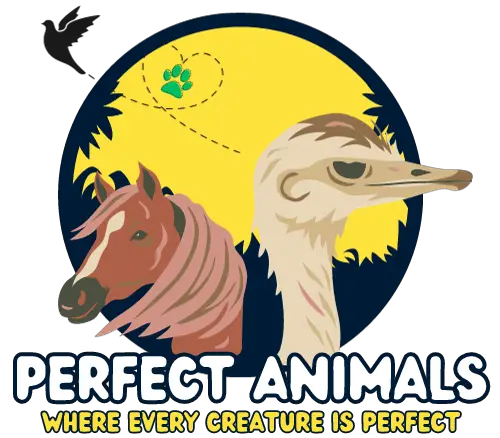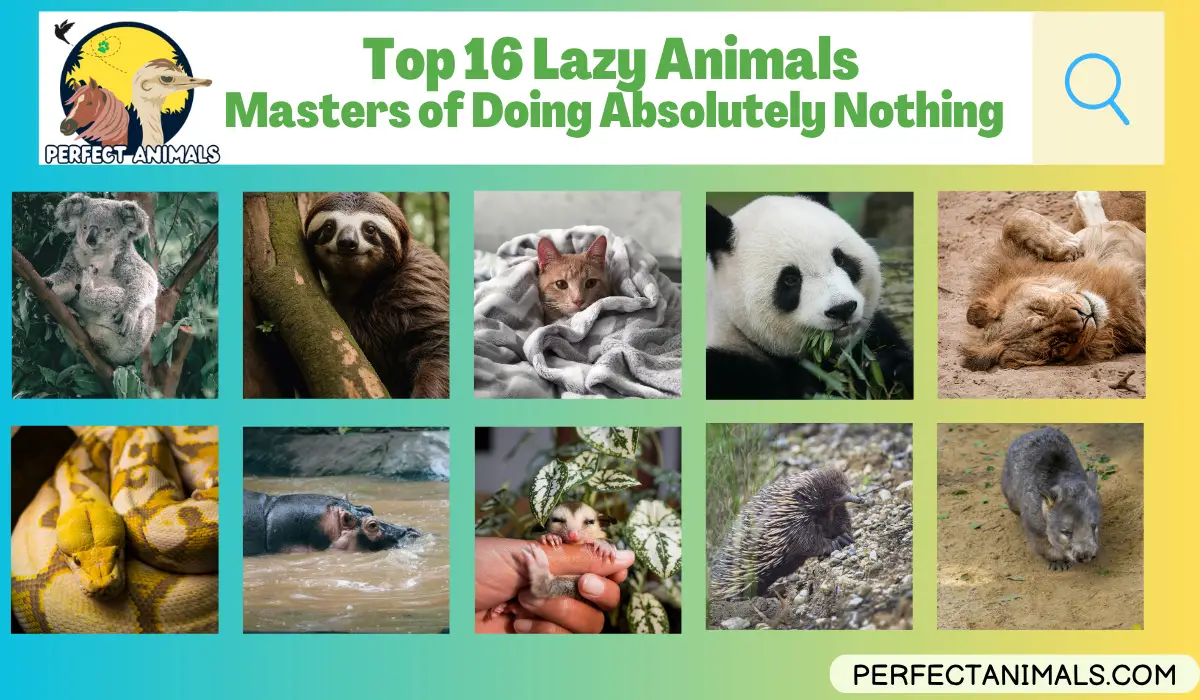Lazy animals have mastered the art of relaxation, and you might just find yourself relating to them. Ever felt guilty about spending an entire Sunday on the couch binge-watching shows?
Well, good news—you’re not lazy, you’re just channeling your inner sloth.
The animal kingdom is full of creatures who’ve perfected energy conservation, living their best lives while the rest of us stress about productivity.
These animals aren’t lazy in a bad way—they’re strategic about how they use energy. Why run around wasting calories when you can chill and still survive?
From creatures that sleep 20+ hours a day to those who move so slowly they grow algae, lazy animals have figured out something we’re still learning: sometimes, doing less means doing more.
Let’s meet the 16 laziest animals on the planet—and maybe pick up a tip or two on the art of relaxation.”
1. Sloth
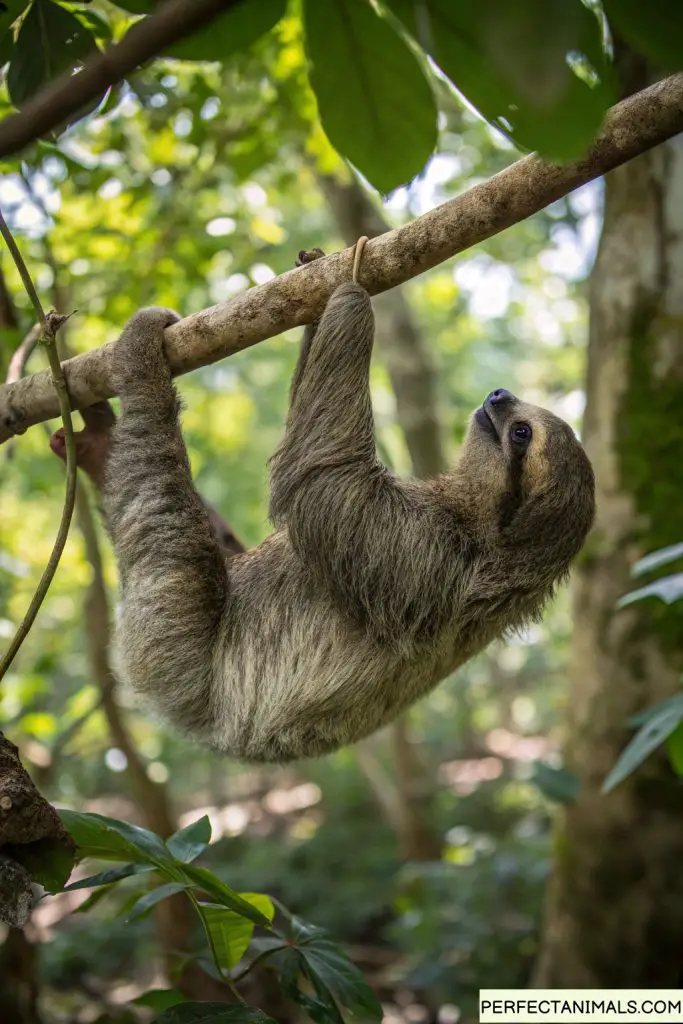
The undisputed champion of laziness, and honestly, they’re not even trying to hide it.
Sloths sleep 15-20 hours a day and when they’re awake, they move so slowly that algae literally grows on their fur. That’s commitment to the lazy lifestyle.
They’re so energy-efficient that they only poop once a week. Think about how much time that saves.
Their metabolism is ridiculously slow – it can take them up to 30 days to digest a single leaf. Meanwhile, we’re over here stress-eating and wondering why we can’t relax.
Fun fact: sloths are so chill that they sometimes grab their own arm thinking it’s a tree branch and fall. But they’re fine with it because falling is still less work than paying attention.
The sloth has basically figured out that if you move slowly enough, predators might not even notice you’re alive. It’s laziness as a survival strategy, and it works.
2. Koala
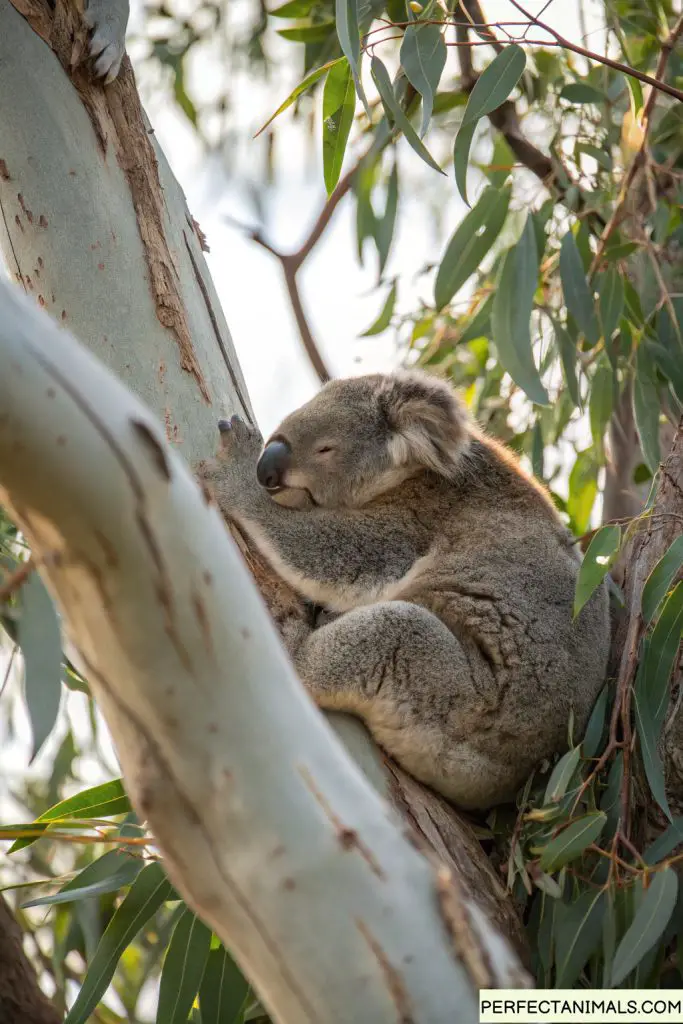
Koalas sleep up to 22 hours a day, which makes even sloths look productive.
Their entire diet consists of eucalyptus leaves, which are toxic and provide almost no nutrition. So they have to conserve every bit of energy just to process their terrible food choices.
When koalas aren’t sleeping, they’re eating. When they’re not eating, they’re sleeping. That’s the whole schedule.
They have one of the smallest brain-to-body ratios of any mammal, which honestly seems like an evolutionary adaptation for not overthinking things. Work smarter, not harder.
Baby koalas eat their mother’s poop to build up immunity to eucalyptus toxins. Even their parenting style is low-effort – “Here kid, eat this and figure it out.”
Koalas basically decided that sleeping in a tree and occasionally munching poisonous leaves was a lifestyle, and they committed fully.
3. Giant Panda
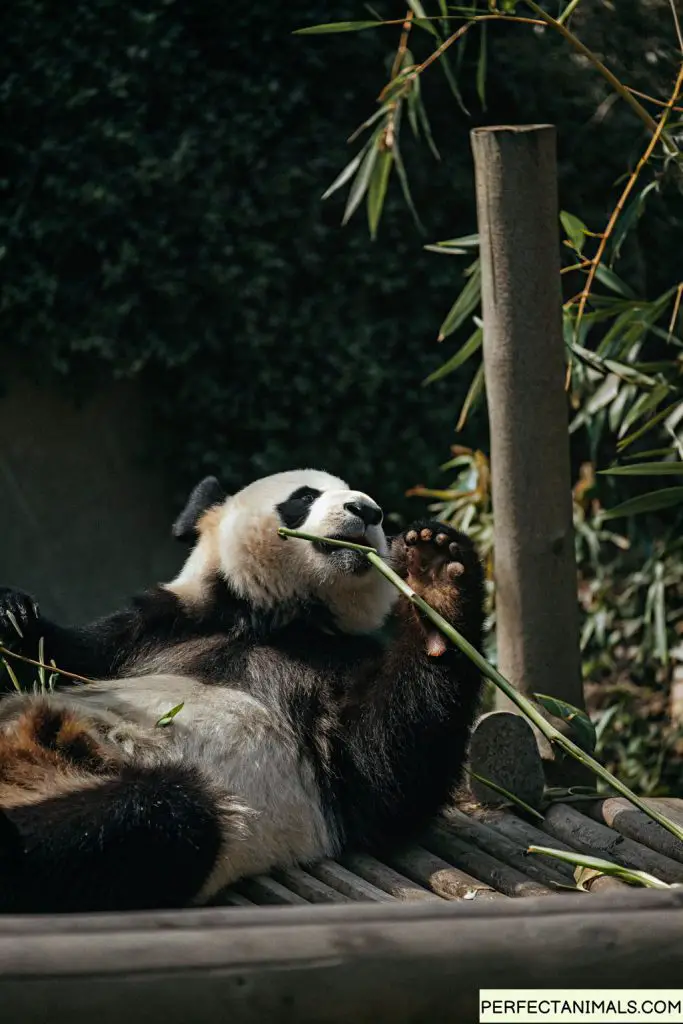
Giant pandas spend 12-16 hours a day eating bamboo, which sounds like a lot of work until you realize they spend the other hours sleeping.
They eat up to 40 pounds of bamboo daily but only digest about 20% of it. Their digestive system is so inefficient that they basically have to eat constantly just to survive.
Pandas are terrible at reproducing – females are only fertile for 2-3 days per year, and even then, they’re not that interested. Conservation efforts have to show them panda videos to get them in the mood.
They’ll literally sit in one spot eating bamboo for hours without moving. If there’s bamboo within reach, why relocate?
Despite being bears with sharp claws and teeth, pandas would rather just chill and munch leaves than hunt anything. They’re the ultimate peaceful lazy animals.
Their entire existence seems designed around minimum effort, maximum nap time.
4. Lion
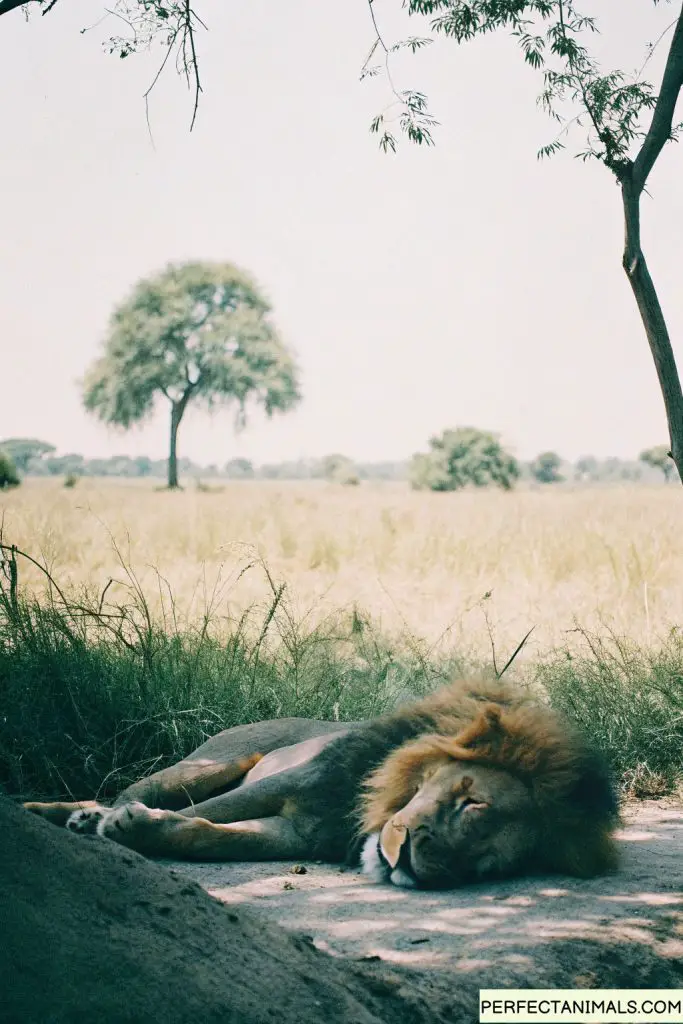
The king of the jungle is also the king of napping – lions sleep 16-20 hours a day.
Here’s the kicker: female lions do almost all the hunting while males just lounge around looking majestic. They’ve literally outsourced their work.
Male lions will occasionally help with hunts if the prey is really big, but mostly they just protect the pride by looking intimidating. It’s the ultimate “work smarter, not harder” approach.
After a big meal, lions can sleep for 24 hours straight. No alarms, no meetings, just pure uninterrupted sleep.
They hunt primarily at night when it’s cooler, which means they’re basically just avoiding uncomfortable situations. Relatable.
Lions have perfected the art of looking busy while doing nothing. They’ll sit there surveying their territory, which is just fancy language for staring into space.
5. House Cat
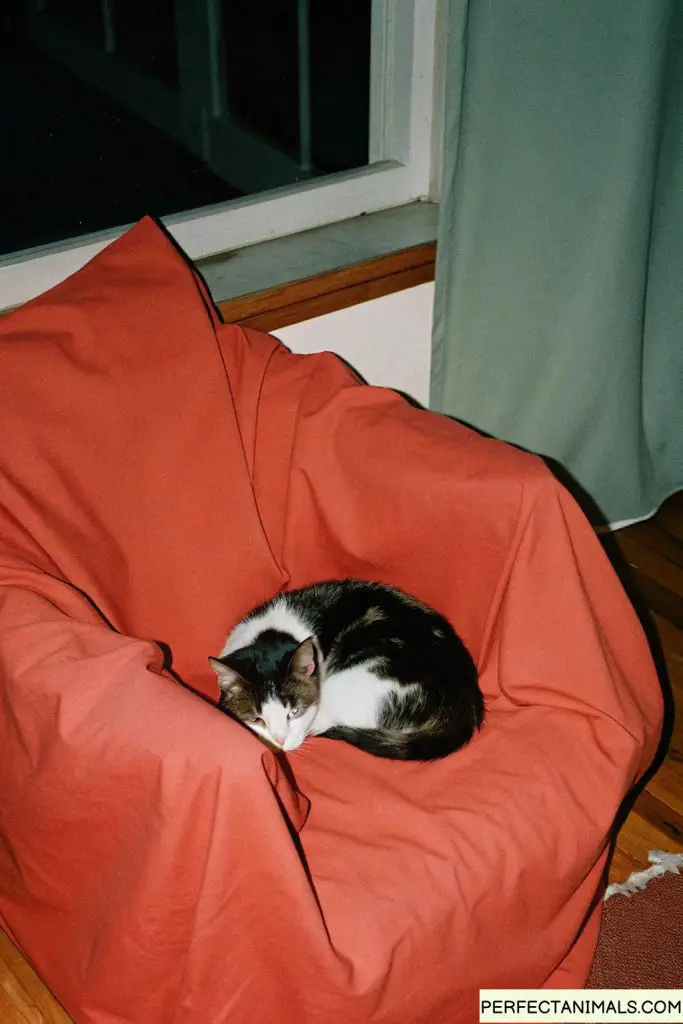
Cats sleep 12-16 hours a day, and the other hours are spent judging you and occasionally asking for food.
They’ve domesticated humans to do literally everything for them – food delivery, waste removal, entertainment, and housing. That’s next-level laziness.
Cats will walk across the entire house to find the exact spot of sunlight to nap in, then move again when the sun shifts. Maximum comfort, minimum effort.
They’re crepuscular, meaning they’re most active at dawn and dusk. The rest of the time? Sleep mode activated.
A cat will spend 30 minutes preparing the perfect sleeping spot, circling and kneading, just to sleep for 3 hours and then move to a completely different spot.
They’ve convinced humans that their laziness is actually regal behavior. We call them “majestic” when they’re literally just napping in a cardboard box.
6. Python
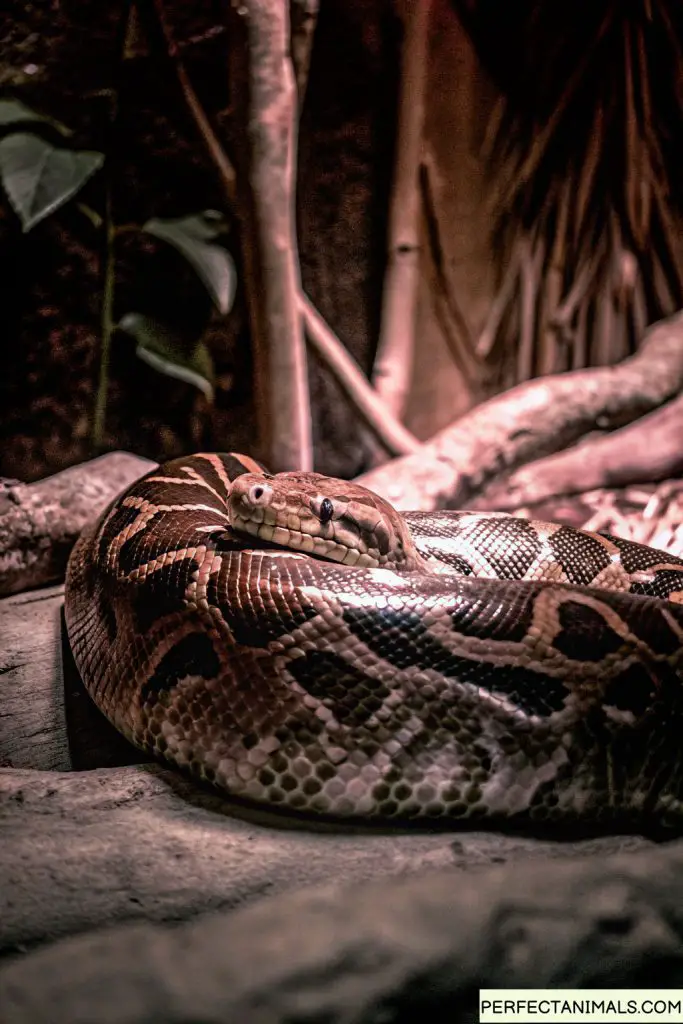
Pythons can go months without eating after one big meal, spending all that time just lying around digesting.
After eating something large (like a deer), a python might not move for weeks. They just find a warm spot and become a living rock.
Their metabolism slows down so much during digestion that they’re basically in energy-saving mode like your phone at 5% battery.
Pythons only hunt when absolutely necessary. Why waste energy chasing food when you can ambush it while lying perfectly still?
They spend most of their time thermoregulating – which is a fancy way of saying they move between sun and shade to maintain body temperature without actually expending energy.
A python’s life strategy: eat big, digest slow, move even slower. It’s the ultimate lazy meal prep plan.
7. Hippopotamus
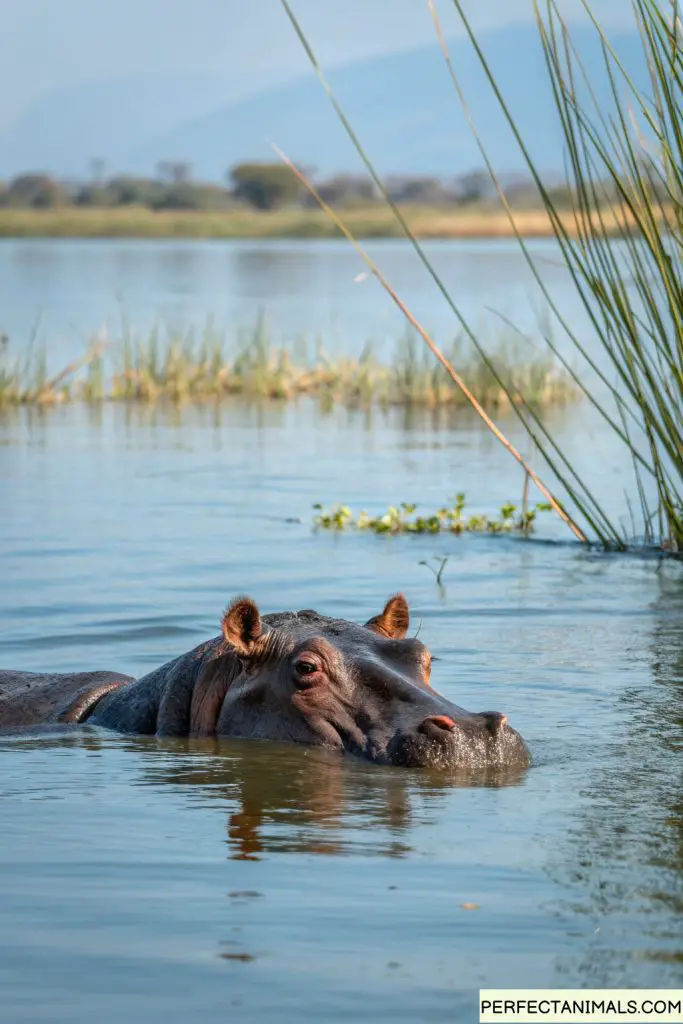
Hippos spend up to 16 hours a day in water, basically just floating around and occasionally opening their mouths.
They’re one of the most dangerous animals in Africa, but mostly because people interrupt their aggressive napping schedule. Don’t disturb a hippo’s leisure time.
Hippos let the water support their massive weight so they don’t have to use their muscles. It’s like they’re in a natural lazy river all day.
They only come out of the water at night to graze on grass, and even then, they walk the same paths every night to minimize navigation effort.
Despite weighing up to 4,000 pounds, hippos will let fish clean their teeth and birds eat parasites off their backs. They’ve outsourced personal hygiene.
Their entire day is basically: float, yawn, float some more, maybe grunt at something, continue floating.
8. Couch Potato Dog Breeds

Bulldogs, Basset Hounds, and similar breeds have been selectively bred to be low-energy companions, and they excel at it.
English Bulldogs can barely breathe normally due to their flat faces, so they’ve adapted by just… not moving much. Problem solved.
Basset Hounds will look at stairs and decide that sleeping at the bottom is a better option than climbing them.
These dogs have perfected the “I would love to go for a walk, but have you considered… not?” facial expression.
They can sleep 12-14 hours a day and still act exhausted when you suggest any physical activity.
Some of these breeds get tired just from eating their meals. They need a nap to recover from breakfast.
They’ve been bred to be companion animals, which apparently translates to “professional couch warmers.”
9. Opossum
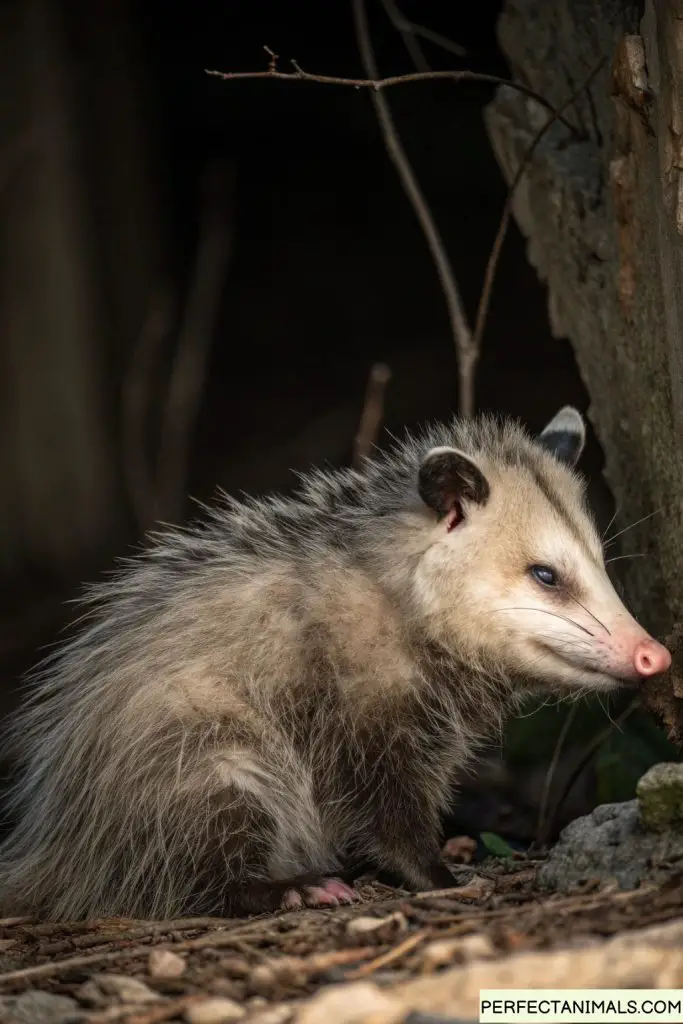
Opossums sleep 18-20 hours a day and spend most of their waking hours looking confused about why they’re awake.
When threatened, they don’t fight or flee – they literally play dead and hope the problem goes away. That’s lazy problem-solving.
They have the lowest metabolic rate of any non-hibernating mammal in North America. They’re basically running on power-saving mode 24/7.
Opossums will eat whatever’s easiest to find – trash, roadkill, fallen fruit. No hunting required, just opportunistic snacking.
They’re immune to snake venom, which is convenient because it means they can be lazy about where they sleep without worrying about danger.
Their defense strategy is “pretend to be dead and smell bad.” No running, no fighting, just… stop existing temporarily.
10. Echidna
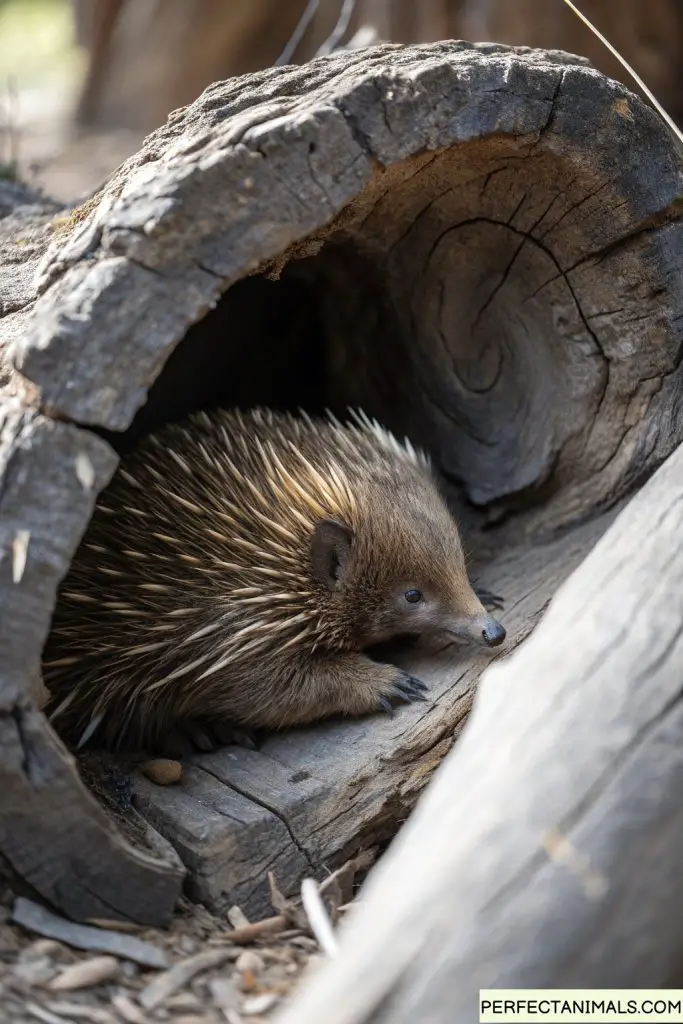
Echidnas are one of the few egg-laying mammals, and they’ve decided that not doing much is their entire personality.
They have an extremely low body temperature and metabolism, which means they need very little food and can just chill most of the time.
When it’s cold, they lower their body temperature even more and basically enter a mini-hibernation. When it’s hot, they do the same thing. They’ve found a way to be lazy in all weather conditions.
Echidnas walk slowly, eat slowly, and even digest slowly. Everything about them is energy-efficient to the extreme.
They dig burrows to sleep in and sometimes don’t come out for days. Just living their best hermit life.
An echidna’s idea of a busy day is walking a few meters to find some ants, eating them slowly, and going back to sleep.
11. Nurse Shark
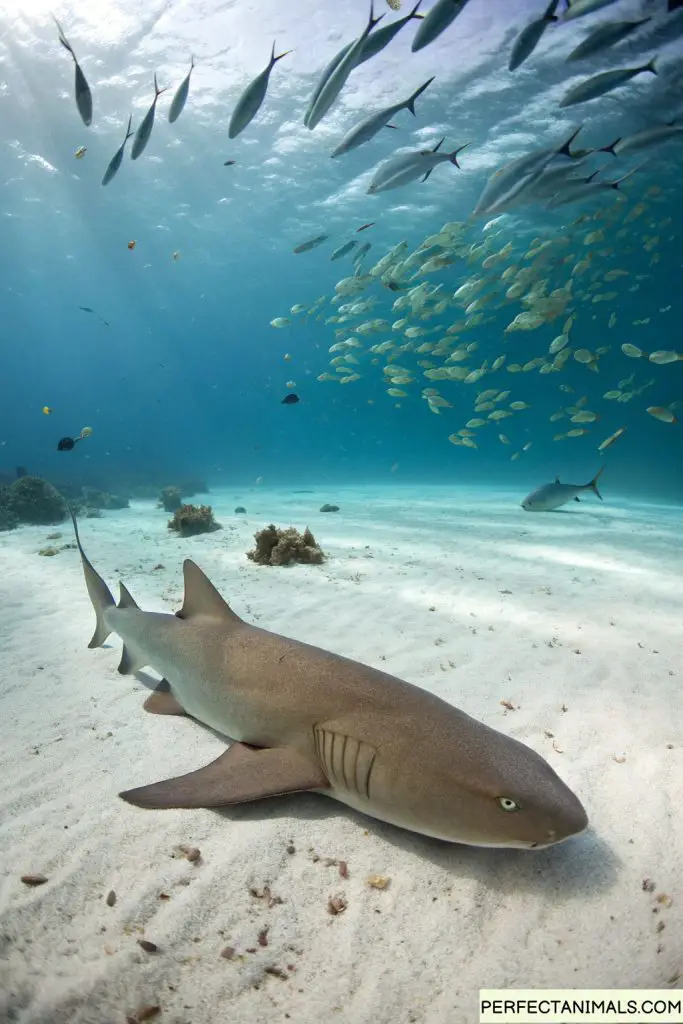
Nurse sharks spend most of their time lying on the ocean floor not moving, which for a shark is impressively lazy.
Unlike other sharks that need to keep swimming to breathe, nurse sharks can pump water over their gills while stationary. They’ve literally evolved to be lazy.
They’re nocturnal hunters, but even their hunting style is lazy – they suck prey off the ocean floor rather than chasing it.
During the day, you can find groups of nurse sharks piled on top of each other sleeping in caves. They’ve invented the underwater cuddle puddle.
Nurse sharks can go weeks without eating and they’re perfectly fine with it. No meal prep stress in their world.
They’re one of the most docile sharks, probably because aggression requires energy and they can’t be bothered.
12. Wombat
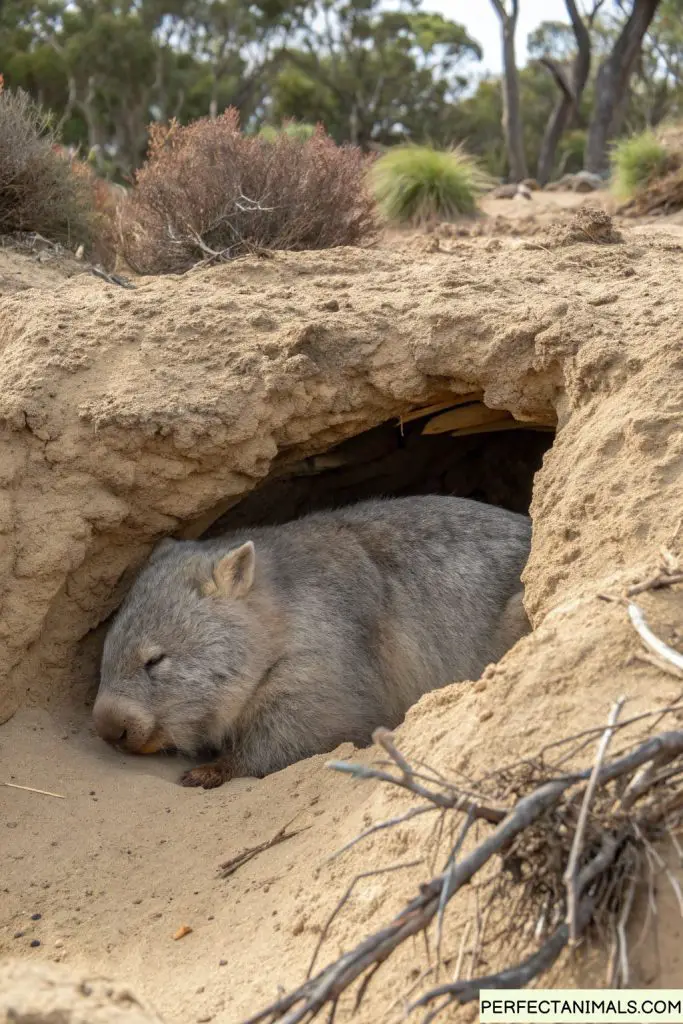
Wombats sleep 16 hours a day in their underground burrows, only coming out at night to eat grass.
They have the slowest metabolism of all marsupials, which is their excuse for not doing anything quickly.
Wombats dig extensive burrow systems and then spend most of their time sleeping in them. It’s like they built a house specifically for napping.
They’re territorial but their method of defending territory is literally backing their hard butts against intruders. Aggressive napping.
Wombats poop cubes (seriously), and even their digestive system is designed for maximum efficiency with minimum effort.
A wombat’s perfect day: sleep, eat grass for a few hours, sleep some more, maybe poop a cube, back to sleep.
13. Brown Bear (During Hibernation)
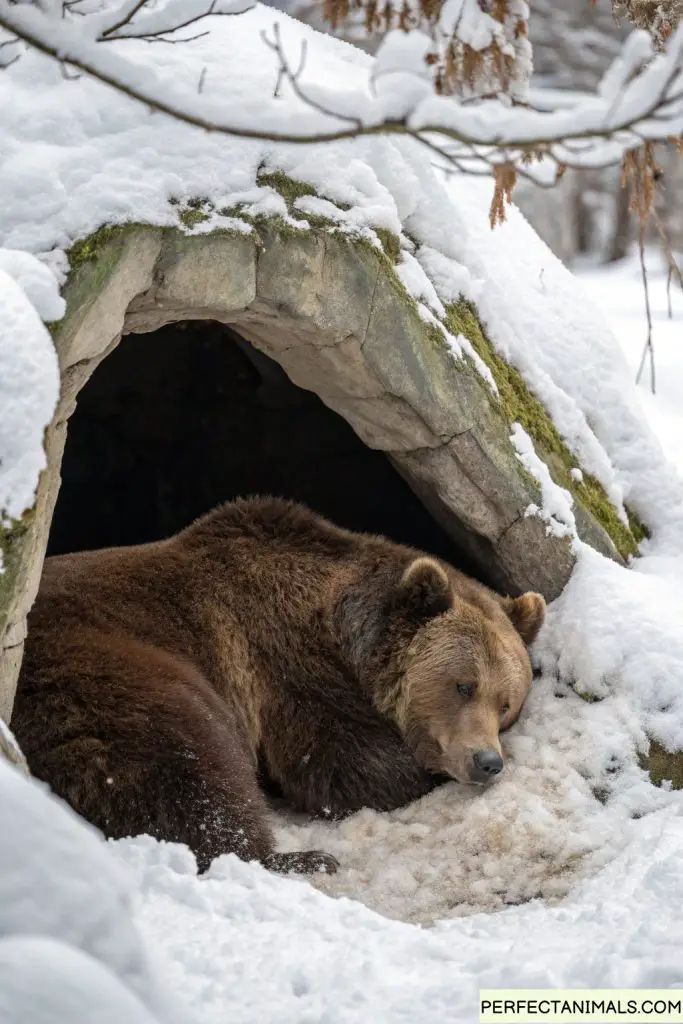
Brown bears take laziness to the extreme by sleeping for 5-7 months straight during hibernation.
They don’t eat, drink, pee, or poop for the entire hibernation period. They’ve literally found a way to pause their existence.
Before hibernation, they eat constantly to pack on pounds, then just… turn off until spring. It’s the ultimate bulk and rest cycle.
Their heart rate drops to 8-12 beats per minute during hibernation. They’re basically as close to being off as a living thing can be.
Even when bears aren’t hibernating, they sleep plenty – often taking long naps during the day between meals.
They’ve evolved to survive winter by doing absolutely nothing. That’s not lazy, that’s genius.
14. Galápagos Tortoise
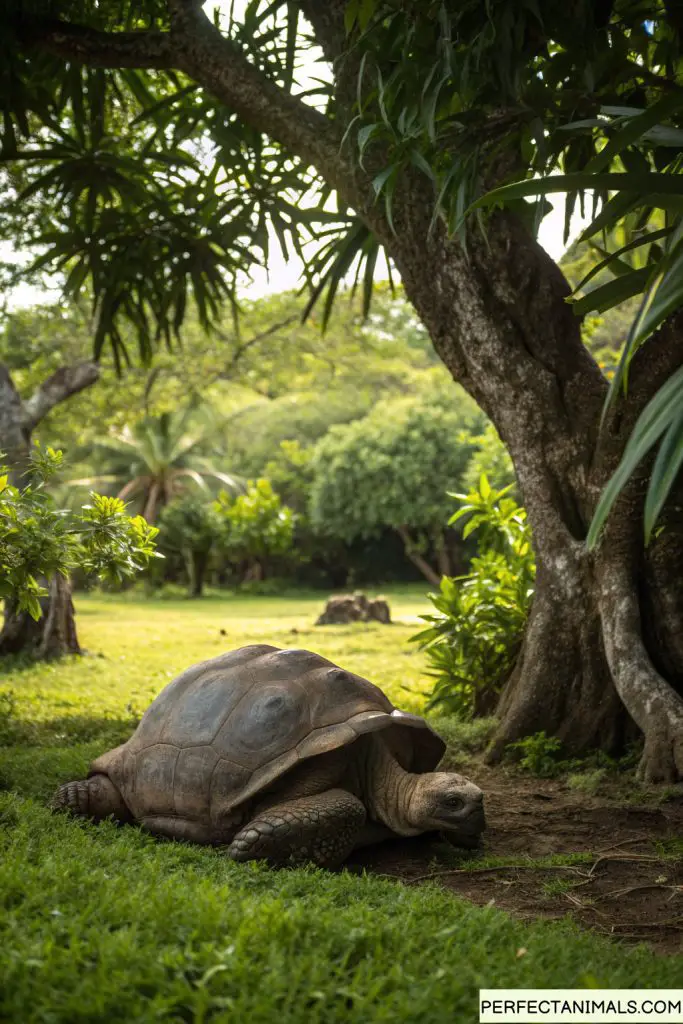
These tortoises can live over 100 years, and they achieve this by moving as little as possible and stressing about nothing.
They sleep 16 hours a day and spend most of their waking hours just slowly munching vegetation.
Galápagos tortoises move at a speed of about 0.16 mph. You could literally walk away, get coffee, come back, and they’d barely have moved.
They can go months without food or water by slowing their metabolism down even further than it already is.
Their shells provide perfect mobile homes, so they never have to rush anywhere. Everything they need is right there on their backs.
These tortoises have perfected the “I’ll get to it eventually” lifestyle and turned it into a century-long existence.
15. Lemur
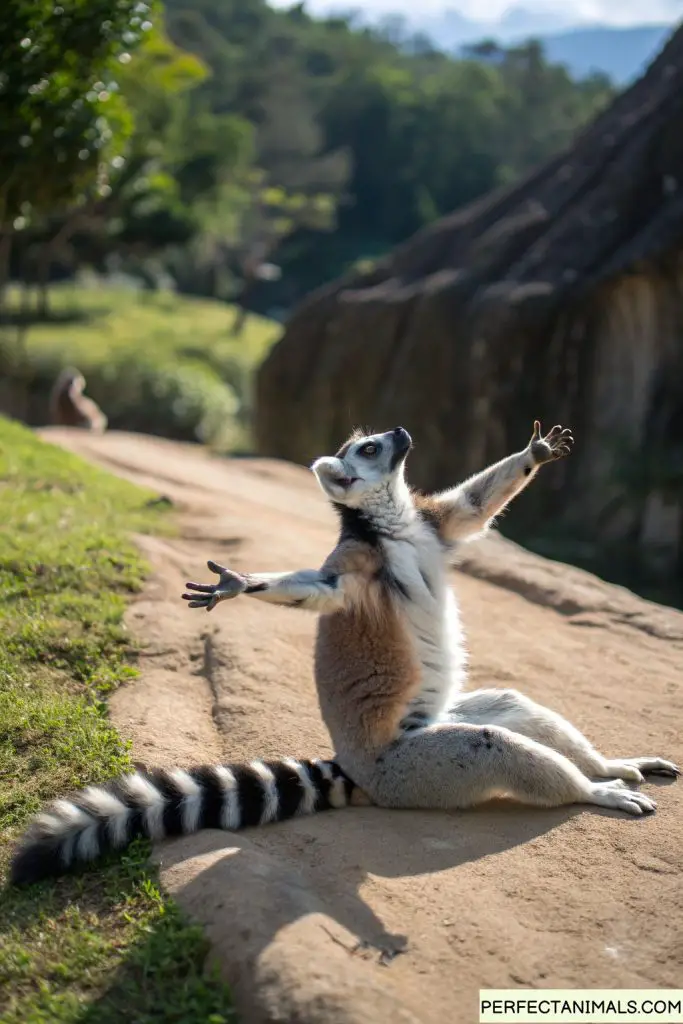
Lemurs, particularly ring-tailed lemurs, are famous for their “sun worship” behavior where they sit with their arms spread out absorbing warmth. It’s literally sunbathing.
They sleep 16 hours a day and spend a good chunk of their waking hours just sitting in the sun like they’re on vacation.
Lemurs practice “energy minimization” – they move just enough to get food and then immediately return to relaxation mode.
They’re social animals, but their socializing often involves group napping sessions. Even their social life is low-effort.
Madagascar’s climate is perfect for their lifestyle – warm enough that they don’t need to work hard to stay comfortable.
Lemurs have elevated “doing the bare minimum” to an art form, and they look cute while doing it.
16. Slow Loris
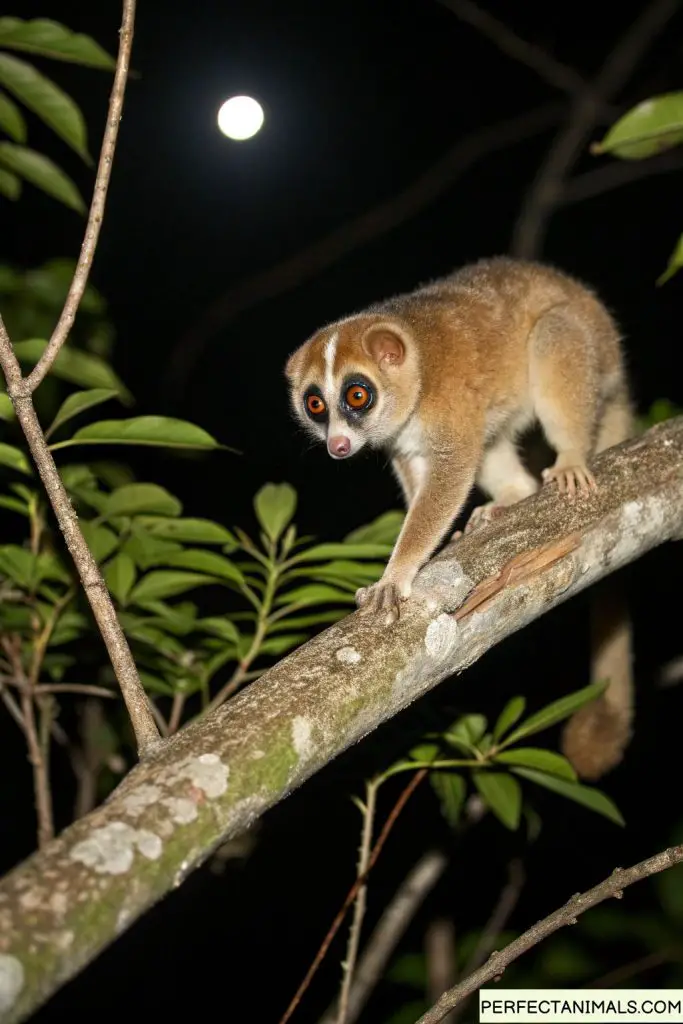
The slow loris is deliberately slow – it’s not sick or tired, that’s just how it moves. All the time.
They sleep most of the day and when they wake up at night, they move at a pace that makes sloths look speedy.
Slow lorises have a toxic bite, which is their defense mechanism. They don’t run from danger because they physically can’t, so they evolved venom instead. Work smarter, not faster.
Their entire hunting strategy is moving so slowly that insects don’t notice them approaching. It’s stealth through extreme laziness.
They have a strong grip that lets them hang from branches for hours without effort, often sleeping while hanging.
The slow loris proves that you can be lazy, slow, and still be a successful predator. Speed is overrated.
Final Thoughts
These 16 animals have figured out something important: conservation of energy is a legitimate survival strategy.
While we’re out here stressing about productivity and hustle culture, these creatures are thriving by doing the absolute minimum required to stay alive and comfortable.
Maybe they’re not lazy – maybe they’re just incredibly efficient with their energy. Why waste calories on unnecessary movement when you could be napping?
The next time someone calls you lazy for taking a day off, just remember: lions sleep 20 hours a day and they’re called the king of the jungle.
Sometimes the smartest thing you can do is absolutely nothing. These animals are living proof. 🙂
You May Also Like
Animals With No Natural Predators
Resources – (for further reading)
Wikipedia – Sloth | Giant panda | Hippopotamus
National Geographic – Koala, facts and photos
International Fund for Animal Welfare – Slow Loris: Facts, Threats & Conservation
Bush Heritage Australia – Wombats (Facts & Photos)

Sarah has years of experience working as a zookeeper. She has cared for a wide variety of animals, from primates to big cats. Her passion for animals extends beyond her profession, as she dedicates her free time to writing about wildlife and their conservation.
